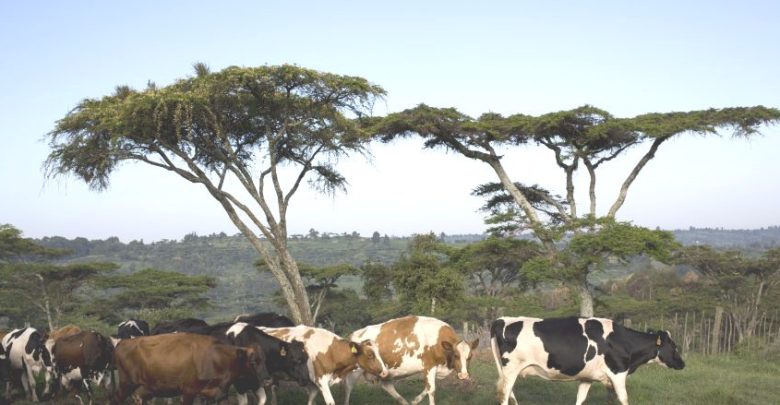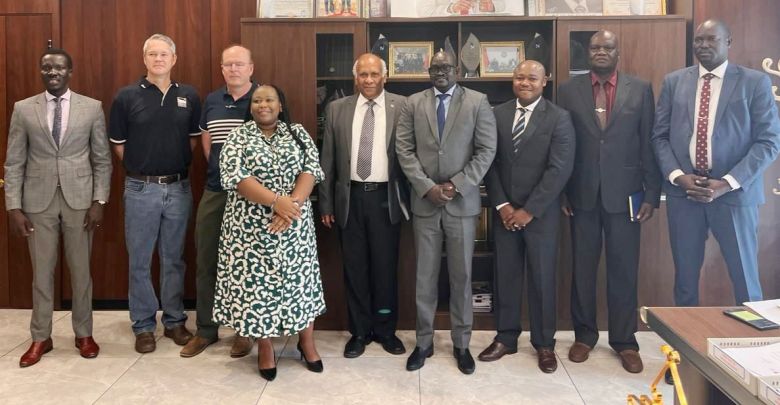- African animal trypanosomiasis (AAT), also known as nagana, is a substantial socio-economic burden to livestock farmers in Sub-Saharan Africa, affecting and killing millions of cattle every year.
- The Bill and Melinda Gates Foundation, the UK Government Foreign Commonwealth and Development Office, Boehringer Ingelheim and GALVmed have joined forces to find a new medical solution to African animal trypanosomiasis (AAT).
The Bill and Melinda Gates Foundation, the UK Government Foreign Commonwealth and Development Office, Boehringer Ingelheim and GALVmed have announced the creation of a new partnership to work on solutions to combat African animal trypanosomiasis (AAT).
AAT is a disease of vertebrate animals affecting cattle, water buffalo, sheep, goats, horses, pigs, dogs, and other species. AAT is caused by the protozoan parasites Trypanosoma congolense, Trypanosoma vivax and, to a lesser extent, Trypanosoma brucei brucei, and is a major problem in Africa where it is mainly spread by tse-tse flies (Glossina spp.). Infection by Trypanosoma vivax also occurs in northern South America where it is transmitted by biting flies such as stable flies (Stomoxys) and horseflies (Tabanids), and it has more recently been reported in the Middle East.
Infectious parasites enter the bloodstream of the host animal and multiply causing fever, weakness, lethargy, and anaemia which lead to weight loss, reduced fertility and milk production, and may result in death.
In Africa, AAT is estimated to threaten more than 50 million cattle1 in known tse-tse endemic areas. However, as many as 90 million cattle2 are threatened if cattle outside the tse-tse belt—potentially at risk because of cattle movements, transhumance and mechanical transmission of T. vivax by biting flies—are also considered. AAT is estimated to kill as many as 3 million cattle2 annually. Losses directly attributed to reduced meat and milk production as well as the cost of treatment and tse-tse control are estimated to be more than USD 1 billion annually3. Losses in agricultural gross domestic product in all affected areas in Africa are believed to be around USD 4.5 billion annually4.
Thanks to strong collaborations, great progress has been made in the control of African human trypanosomiasis which is targeted for elimination by the World Health Organization (WHO) (WHO, 2020a)5. In contrast, control of AAT has been limited. AAT is complex and more challenging to control than human trypanosomiasis for many reasons including the diversity of host species, parasites and vector flies involved, and reservoirs of infection in wildlife. Existing control tools are considered to be inadequate: there are no vaccines, no cost-effective pen-side diagnostic tools, and drugs currently used to treat AAT are associated with problems of counterfeiting and drug resistance. In addition, most countries in which AAT occurs are developing countries, with limited resources to monitor and control endemic livestock diseases. The newly announced partnership between The Bill and Melinda Gates Foundation, the UK Government Foreign Commonwealth and Development Office, Boehringer Ingelheim and GALVmed aims to develop and make available a new solution to address AAT.
The Bill and Melinda Gates Foundation, the UK Government Foreign Commonwealth and Development Office, Boehringer Ingelheim and GALVmed will conduct research and collaborate with other academic and international projects to promote and develop solutions to address AAT. Development of new veterinary products takes many years. It is a complex process, and the partnership has much work to do before it can declare that it has a highly prospective new solution and what a likely launch date would be. The partnership’s aspiration is to be able to launch a new solution for AAT before 2030.
Sources
1.Cecchi G, Mattioli RC. Geospatial datasets and analyses for an environmental approach to African trypanosomiasis. PAAT technical and Scientific Series 9. Rome: FAO, 2009.
- de Mendonça C. “Nagana” Info for Coms. [Presentation]. BIV, 2021.
- Grace D, Songe M, Knight-Jones T. Impact of neglected diseases on animal productivity and public health in Africa. Proceedings of 21st Conference of the World Organisation for Animal Health (OIE) regional commission for Africa, 16-20 February 2015, Rabat, Morocco: Nairobi. ILRI; p 16.
- Shaw APM. Economics of African trypanosomiasis. In: Maudlin I, Holmes PH, Miles MA, editors. The Trypanosomiases. Wallingford: CABI International; 2004. p. 169–402. doi: 10.1079/9780851994758.0369
- WHO: Ending the neglect to attain the sustainable development goals: a road map for neglected tropical diseases 2021–2030. World Health Organization, Geneva. 2020a.




